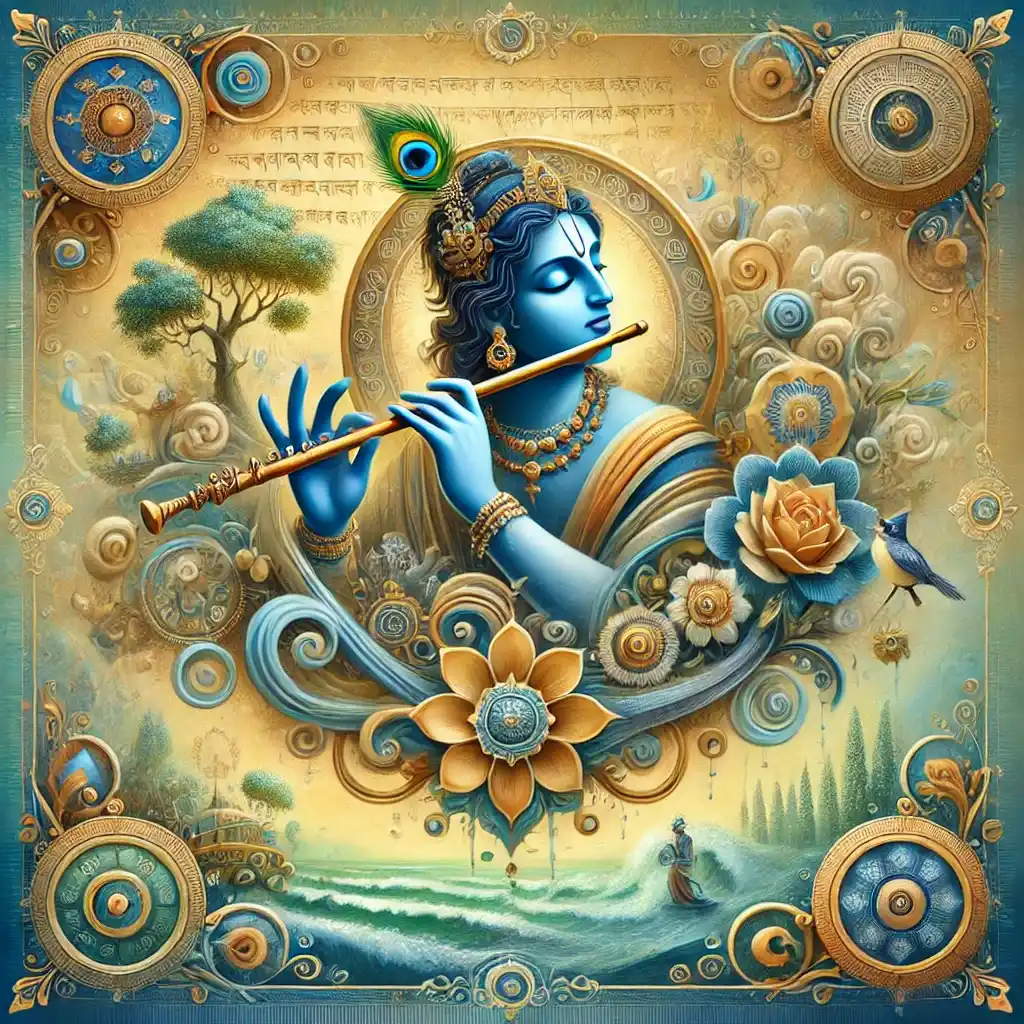
The Puranas
Bhagavata Purana
A Journey into Devotion and Wisdom
The Bhagavata Purana is one of the most revered texts in Hinduism, renowned for its devotional focus and deep philosophical teachings. This ancient scripture is a key part of the Mahapuranas, a genre of eighteen ancient Hindu texts. It is considered a supreme guide to understanding the essence of bhakti (devotion), spirituality, and the nature of the divine. The Bhagavata Purana has influenced the spiritual lives of millions, providing a path toward liberation through love and devotion to Lord Vishnu.
Historical and Cultural Context
The Bhagavata Purana, also known as the Srimad Bhagavatam, was composed around the 9th to 10th century CE, although its origins may date back even further. It is traditionally attributed to the sage Vyasa, the compiler of the Vedas and author of the Mahabharata. The Purana is written in Sanskrit and is composed of twelve books (skandhas) containing 18,000 verses.
The text is particularly significant in the Vaishnavism tradition, where it is revered as the most authoritative text on the practice of bhakti yoga, or the path of devotion. The Bhagavata Purana's influence extends beyond religious practices, permeating various aspects of Indian art, music, dance, and literature.
Structure and Content
The Bhagavata Purana is divided into twelve books, each focusing on different aspects of spirituality and devotion. The first two books set the stage by introducing the importance of bhakti and the qualities of a true devotee. The third through sixth books explore cosmology, the stories of various sages, and the incarnations of Vishnu, such as the famous story of Narasimha and Prahlada.
The seventh and eighth books provide detailed accounts of the avatars of Vishnu, including the stories of Lord Rama and Lord Krishna. The ninth book narrates the genealogies of the great dynasties of ancient India, leading up to the birth of Krishna.
The tenth book is the heart of the Bhagavata Purana and is entirely dedicated to the life and teachings of Krishna, particularly his childhood and youth in Vrindavan. This section is renowned for its poetic and emotional descriptions of Krishna's divine play (lila) and is often recited in devotional gatherings.
The final books focus on the teachings of Krishna, the nature of the soul, the process of liberation (moksha), and the importance of surrendering to God.
Philosophy and Teachings
At its core, the Bhagavata Purana is a text of bhakti. It teaches that devotion to God, especially in the form of Krishna, is the highest path to spiritual realization. The Purana emphasizes that true devotion is selfless, without any desire for material gain or even liberation. The text presents a vision of God as both immanent and transcendent, accessible to all through love and devotion.
One of the key philosophical teachings of the Bhagavata Purana is the concept of "lila," the divine play of God in the world. It portrays the world as a stage where God manifests in various forms to engage with his devotees, offering them opportunities to experience divine love and ultimately attain liberation.
The Bhagavata Purana also delves into the nature of reality, the self, and the universe. It discusses the importance of detachment, the impermanence of the material world, and the need for a disciplined spiritual life.
Influence and Legacy
The Bhagavata Purana has had a profound impact on the devotional practices of Hindus across India and beyond. It is the primary source of inspiration for many bhakti movements, including the Gaudiya Vaishnavism tradition, which emphasizes the worship of Krishna as the Supreme Being. The Purana's teachings have also influenced various saints and poets, including the famous Alvars and Nayanars of South India, as well as the Bhakti saints of North India like Mirabai and Tulsidas.
In addition to its religious influence, the Bhagavata Purana has inspired countless works of art, literature, and performance. The stories of Krishna's childhood, in particular, have been depicted in paintings, sculptures, and classical dance forms like Bharatanatyam and Kathak. The Purana's poetic verses are often sung in devotional music, particularly in the form of kirtans and bhajans.
Conclusion
The Bhagavata Purana remains a timeless spiritual guide, offering insights into the nature of devotion, the divine, and the path to liberation. Its teachings continue to resonate with devotees and spiritual seekers, providing a foundation for a life of love, devotion, and surrender to the divine will. Whether through its philosophical discourses, its captivating stories, or its poetic hymns, the Bhagavata Purana invites us to explore the depths of divine love and experience the joy of a life devoted to God.

Explore the latest and most popular products available on Amazon, handpicked for your convenience! Whether you're shopping for tech gadgets, home essentials, fashion items, or something special, simply click the button below to view the product on Amazon. We’ve partnered with Amazon through their affiliate program, which means that if you make a purchase through this link, we may earn a small commission at no extra cost to you. This helps support our site and allows us to continue providing valuable content. Thank you for your support, and happy shopping!